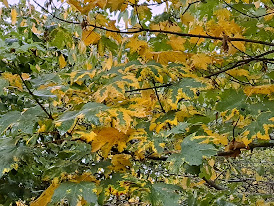We have six common ferns at Filnore Woods. These include Bracken, Harts Tongue Fern,
Male Fern, Lady Fern, Soft Shield Fern and Broad Buckler Fern. They may all look the same at first, but when you get to know them, their individual characteristics and differences are a delight.
The easiest is the Hart's Tongue. The strap-like fronds are not divided at all. Look on the underside to see the brown sporangia, which generate the spores - a fern's equivalent to seeds.
The Male Fern's fronds are divided twice into pinnas and pinnules.
Behold the sporangia on the underside of male fern fronds.
In Victorian times it was thought that the Lady Fern was a female counterpart to the male fern. It is in fact a completely different species. It is also divided into pinnas and pinnules but the pinnules have frilly edges. It is rather more delicate than the robust male fern and prefers damp places.
The Soft Shield Fern is also doubly pinnate, with pinnas and pinnules, but the larger pinnules are like tiny mittens with a hand and a thumb. If it helps you to remember the name, think of a mitten being a soft shield against the cold. Their is also a hard shield fern (not at Filnore) which has a spine at the end of each mitten but the soft shield fern's pinnules end in a soft hair or seta.
and the sporangia
The Broad Buckler Fern is tripply pinnate with pinnas, pinnules and pinnulets. It prefers acid soil and we have a few patches at Filnore.
And here is a fern that is is different from the others because it has a vertical stem with branches at intervals. Bracken is an international weed famous for being difficult to eradicate.
It invades, woods and grassland, swamping most other plants.
If it is cutback it just pops up again.
All photos taken recently of these ferny riches at Filnore Woods.
















%5B1%5D.jpg)

































